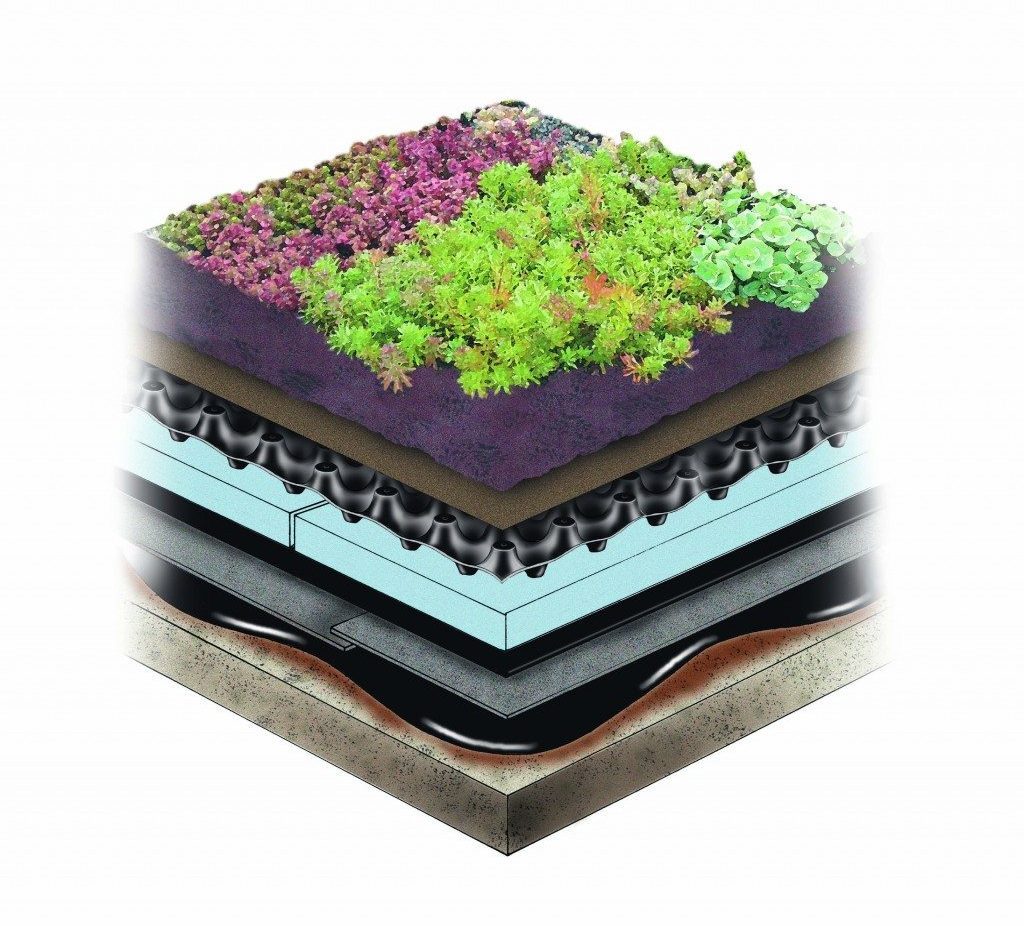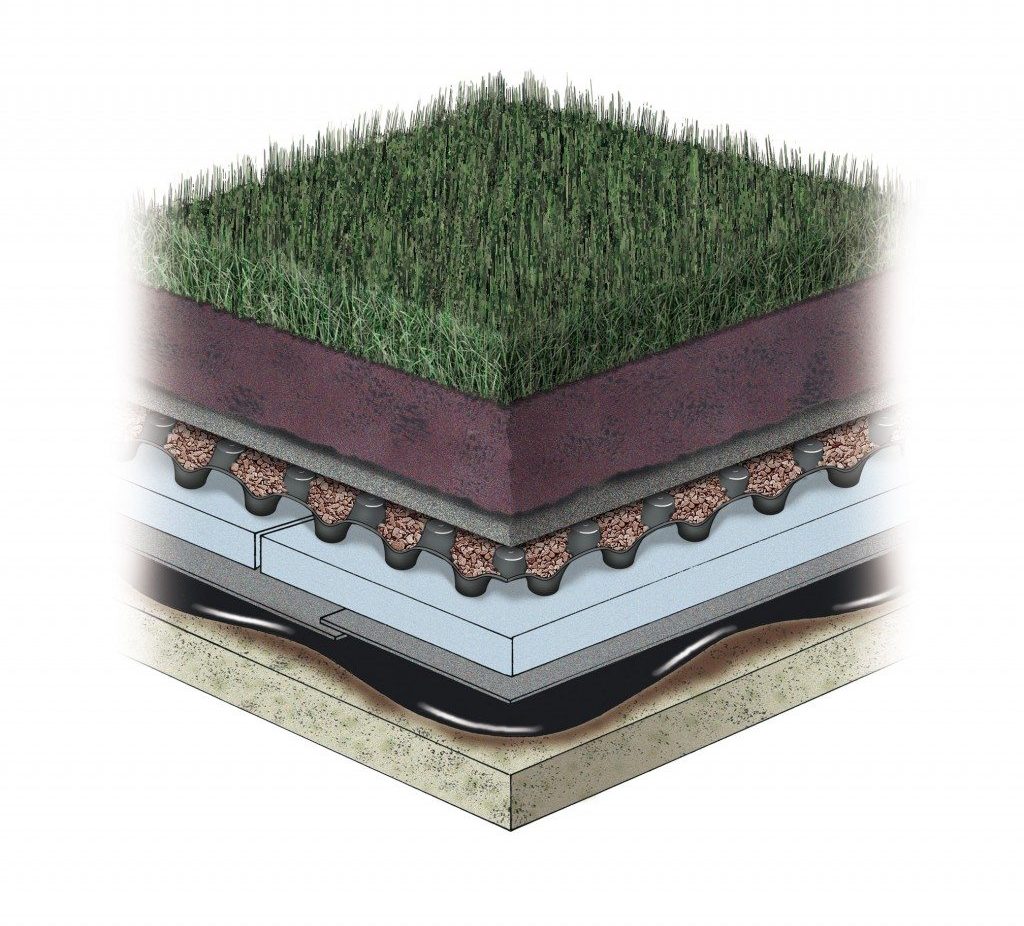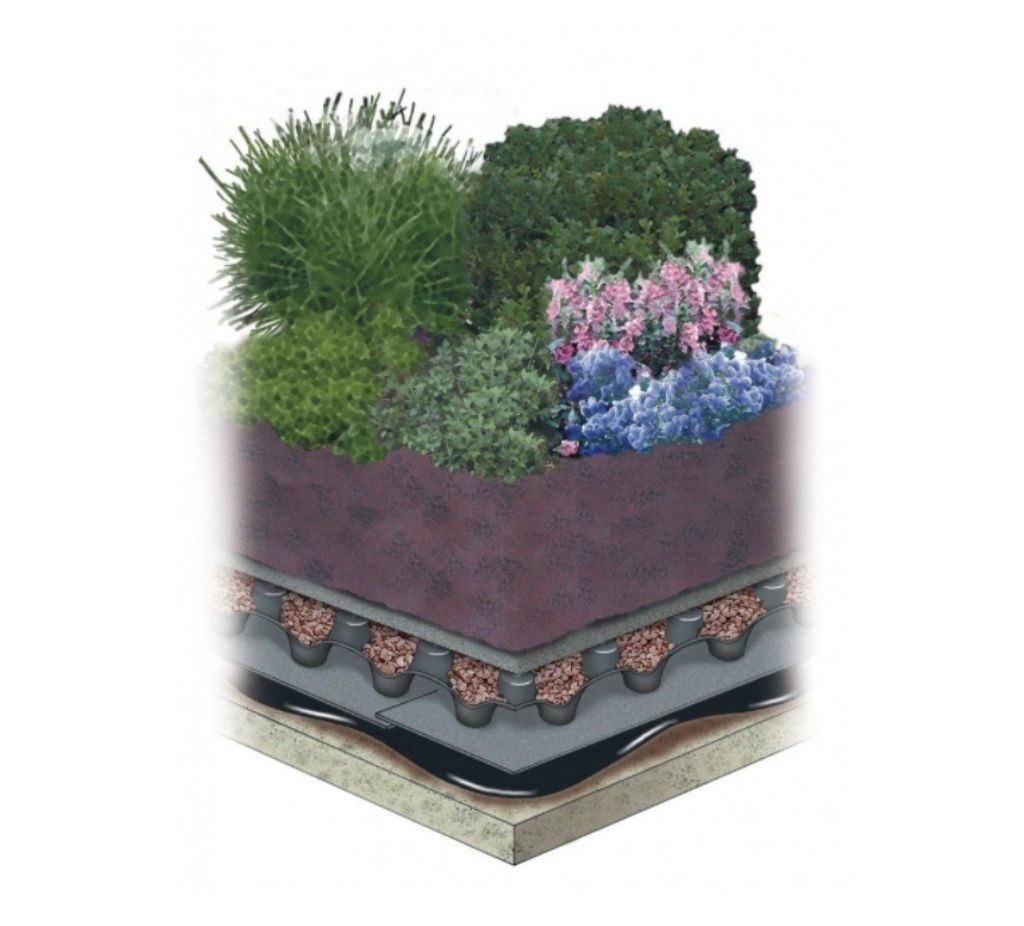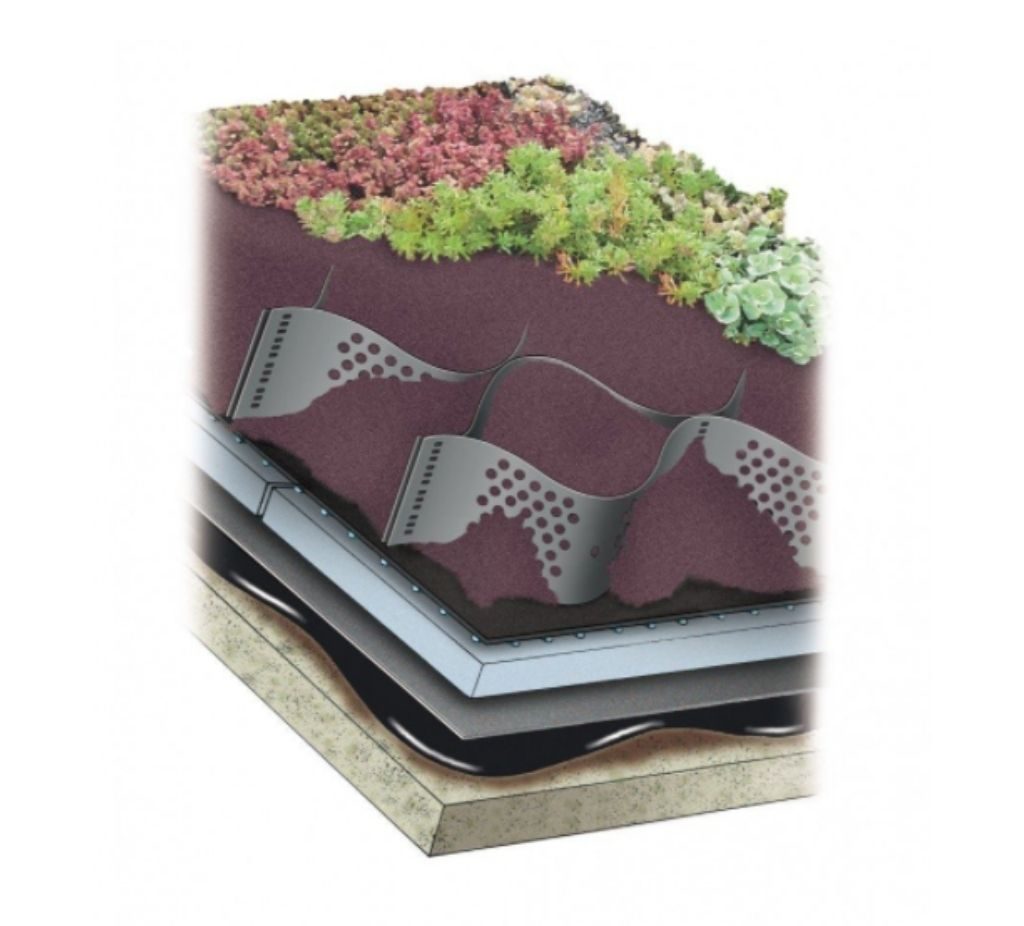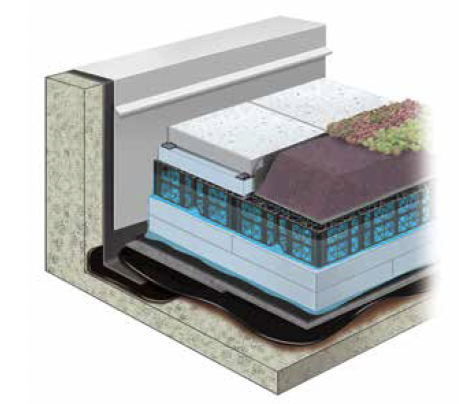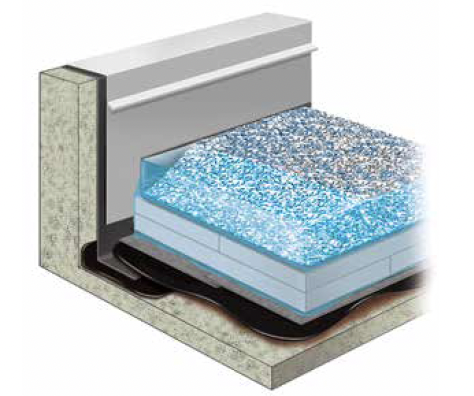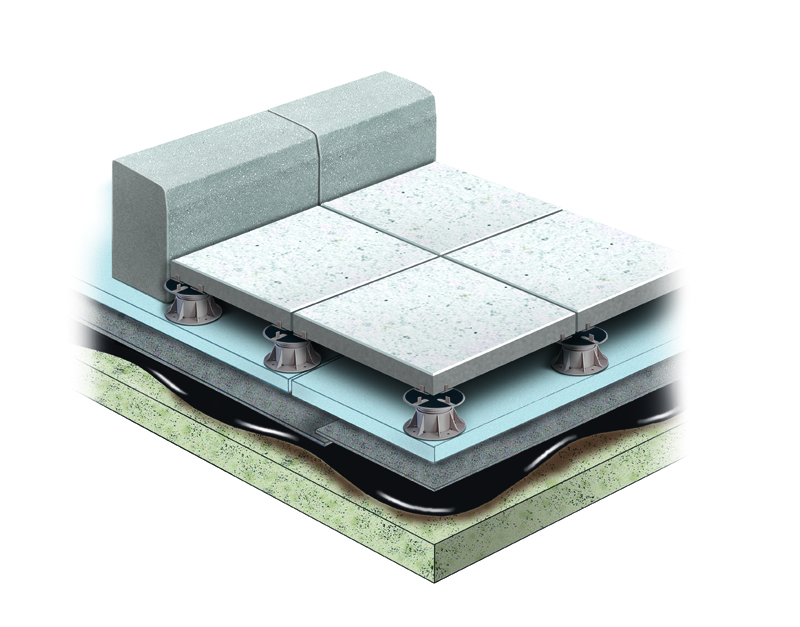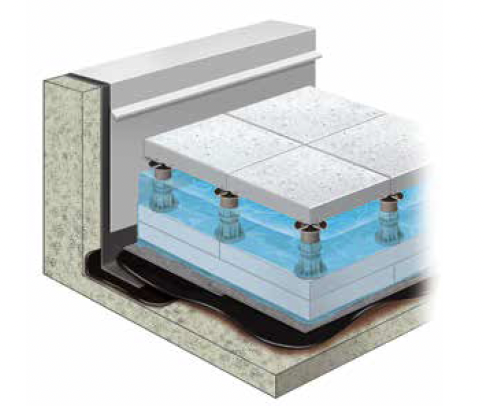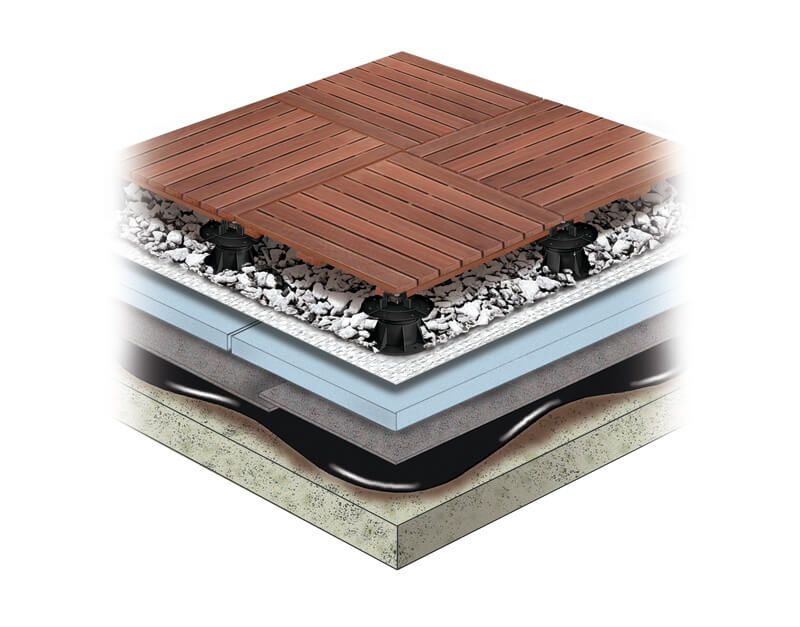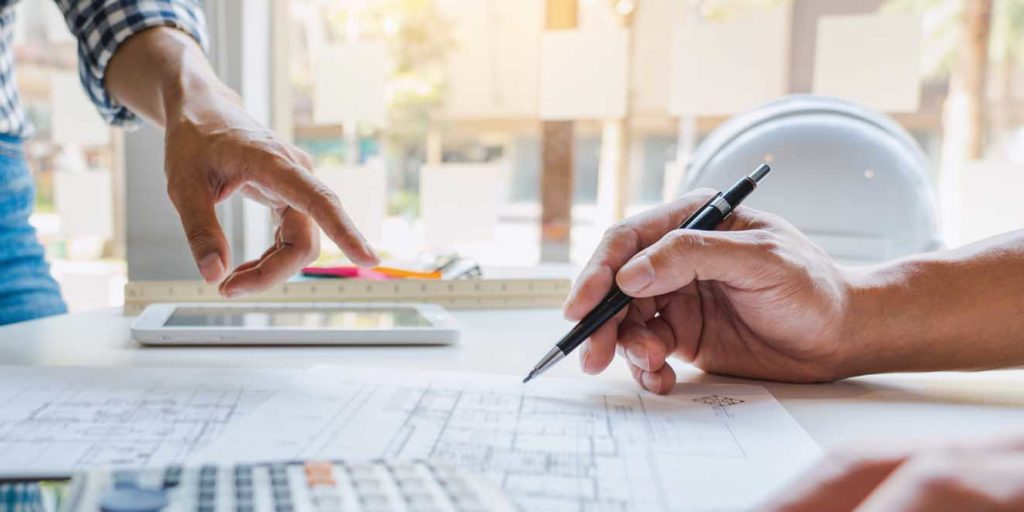Vegetated roofs offer protection from damaging UV light, hail, and other physical destruction. A rooftop membrane that’s protected under the various layers of a green roof assembly has a much longer lifespan than a standard roof that’s fully exposed to the elements. The useful life of a waterproofing and/or roofing membrane can be increased by as much as 3-4 times than that of a standard application.
It’s no secret that people benefit from being surrounded by or simply within sight of vegetation. Plants have healing properties and provide a welcoming, healthy, and therapeutic environment. Green roofs allow for them to be incorporated into commercial, healthcare, municipal, institutional, and residential rooftops, where tenants or visitors would not otherwise receive any sort of benefit.
Rooftops typically receive more sunlight than at-grade landscapes, simply because they’re closer to the sun and these taller structures aren’t usually shaded by surrounding tree lines. This increased sun exposure makes them a great option for rooftop agriculture and even aquaculture and aquaponics. A green roof that acts as a rooftop garden is a win-win solution, especially in urban settings where farmable property is scarce and food deserts may exist. Think of it as roof to table eating!

